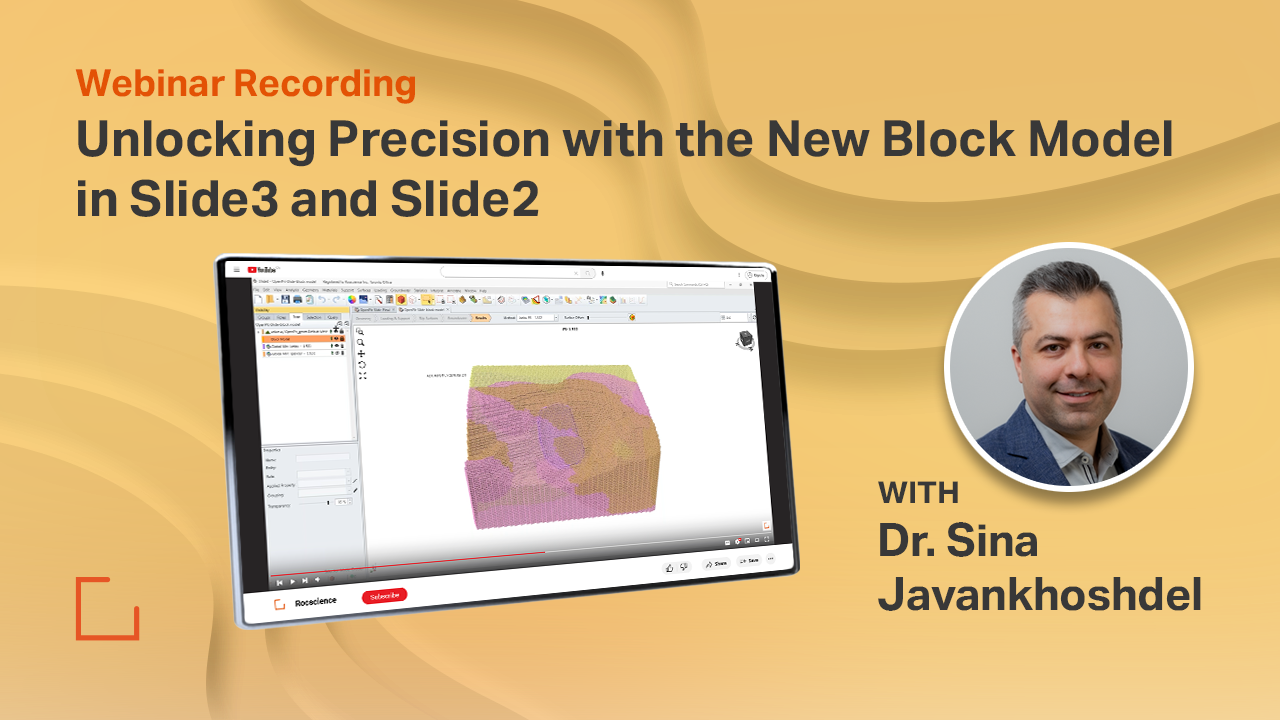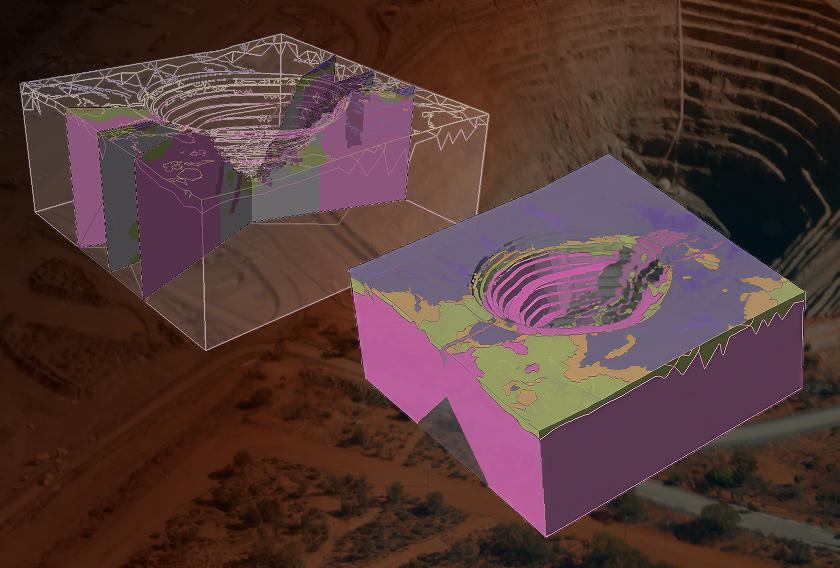RS2 Expands Workflow with Block Model Integration
- Rachel Ruici Liu, Geotechnical Project Manager
Block models are at the core of modern mining projects, capturing the variability of complex geological conditions and informing critical design decisions. Yet until now, moving those models between tools often meant breaking workflows and risking inconsistencies between 2D and 3D analyses.
With the introduction of the Block Model feature in RS2, you can now integrate block-based geological data directly into finite element slope stability studies, carrying your models seamlessly from Slide3 and Slide2 into RS2.
A block model represents a rock/soil mass using a 3D gird of cubes (“block”). Each block is assigned a material type along with its geotechnical properties (e.g., friction angle, cohesion, GSI, etc). The block database itself is stored as a point cloud of regularly spaced points in 3D space, with each point containing information such as coordinates, material type, and properties.
This block model approach—widely used across the mining industry—captures spatial variability in complex ground conditions. Models generated in programs like Leapfrog, Deswik, Vulcan, and Datamine are already supported across Rocscience products including Slide3, RS3, and Slide2. With RS2 now added, Rocscience completes the cycle of fully integrated block model support.
Extending Your Analysis from Slide2 to RS2
In RS2, the block model feature becomes available when you have a Slide2 project that actively uses a block model. Below showcases a block model application from Slide2 to RS2.
For example, consider an open pit mine project:
- The block database was initially imported into a Slide3 model.
- A 2D section cut was performed at the critical area using the Slide2 Section Creator in Slide3 (Figure 1).
- This section was exported to Slide2 for a 2D LEM analysis (Figure 2).
- Finally, the Slide2 model was imported directly into RS2, where the block model was projected onto the 2D FEM model (Figure 3).
Figure 2 (below) shows what a Slide2 project with a block model looks like.
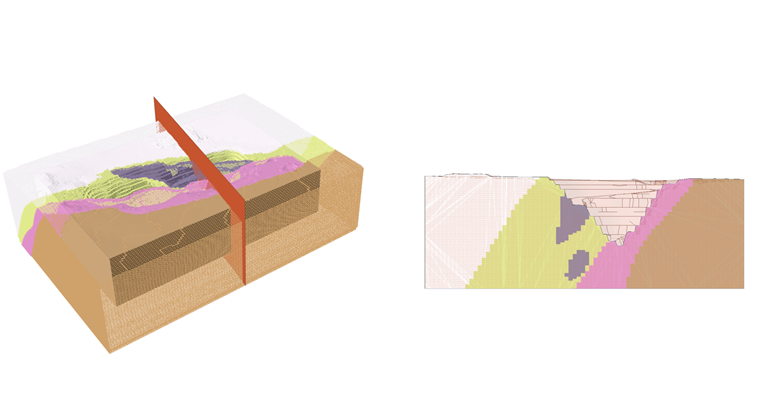
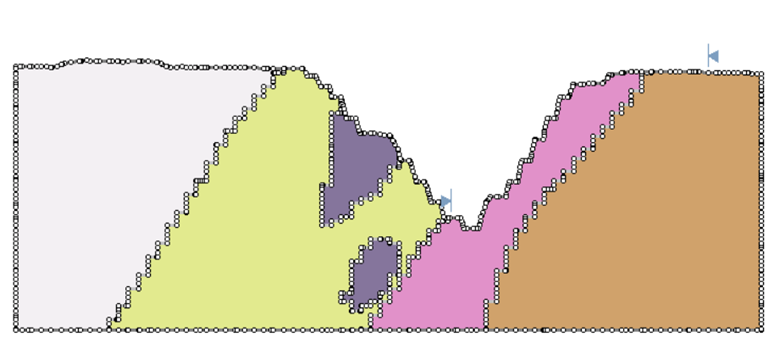
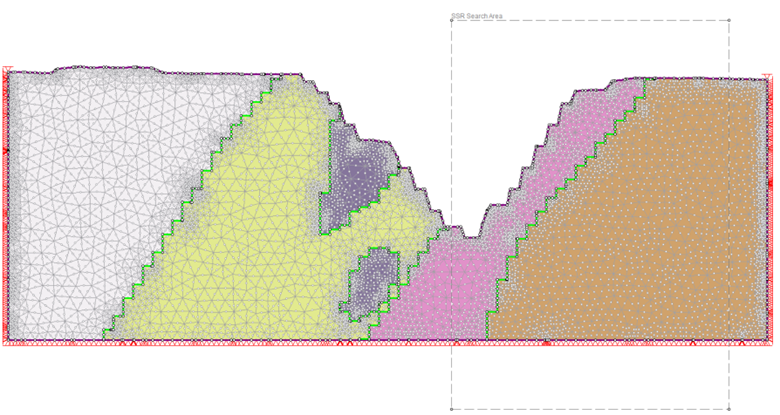
In RS2, the 2D model with the block model projected onto it is created automatically, allowing users to continue building the model and perform FEM slope stability analysis. All block model information—including Generalized Hoek-Brown, Generalized Anisotropy and Mohr-Coulomb parameters such as UCS, GSI, mi, D, cohesion, friction angle, dip, and dip direction—is successfully integrated into the RS2 model.
After mesh generation and the assignment of boundary conditions in RS2, an SSR (Shear Strength Reduction) Search area can also be added to better capture the failure region, effectively mimicking the limited search area used in Slide2.
Comparing RS2 Results with Slide2
A finite element slope stability analysis in RS2 produced a Critical Strength Reduction Factor (SRF) of 1.22.
- Figure 4 (below) shows the maximum shear plastic strain contour at SRF = 1.23, where the failure surface resides within the SSR search area.
- Figure 5 (below) shows the total displacement contour at the same SRF.
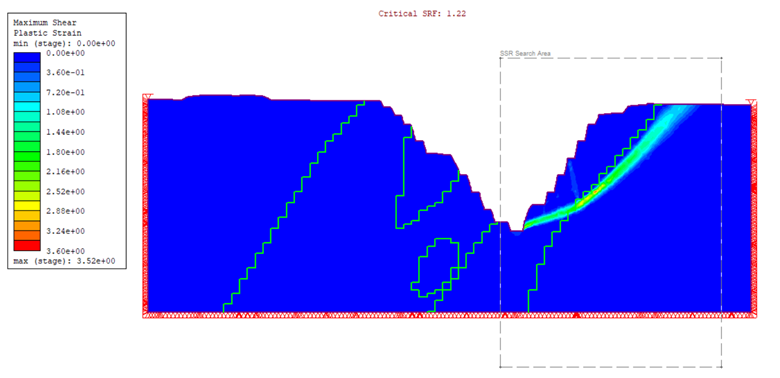
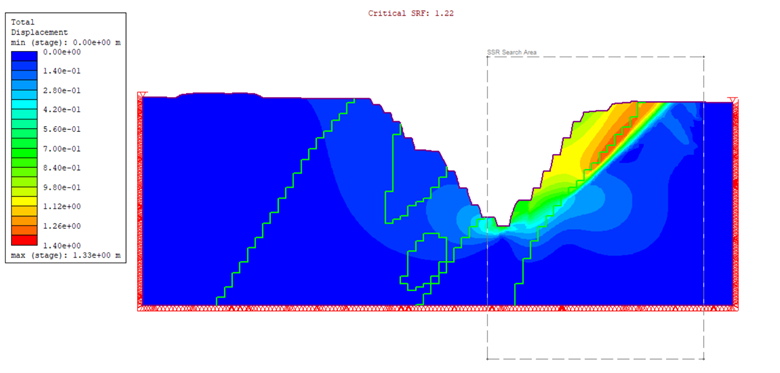
For comparison, the Slide2 2D limit equilibrium analysis produced a Factor of Safety (FS) of 1.254 (Figure 6). This value is very close to the critical SRF of 1.22 in RS2 (figure 4), demonstrating strong agreement between the methods.

Why This Matters
Block models are widely used in the mining industry to visualize geological databases, analyze complex soil and rock masses, and more accurately predict failure areas. With block model support in RS2, Rocscience gives engineers the flexibility to:
- Build and analyze block models in both 3D and 2D.
- Transition smoothly between limit equilibrium and finite element methods.
- Capture geological variability with accuracy and consistency across all Rocscience tools.
Conclusion
The implementation of block models in RS2 completes the integration already available in Slide3, RS3, and Slide2. Engineers can now carry block databases across the entire Rocscience suite, choosing between 3D and 2D analysis as their projects demand.
This means one thing: maximum flexibility in your workflow, without sacrificing accuracy, consistency, or the ability to model the complexity of real-world ground conditions.
With RS2, your block models travel with you, closing the loop on integrated geotechnical analysis.

